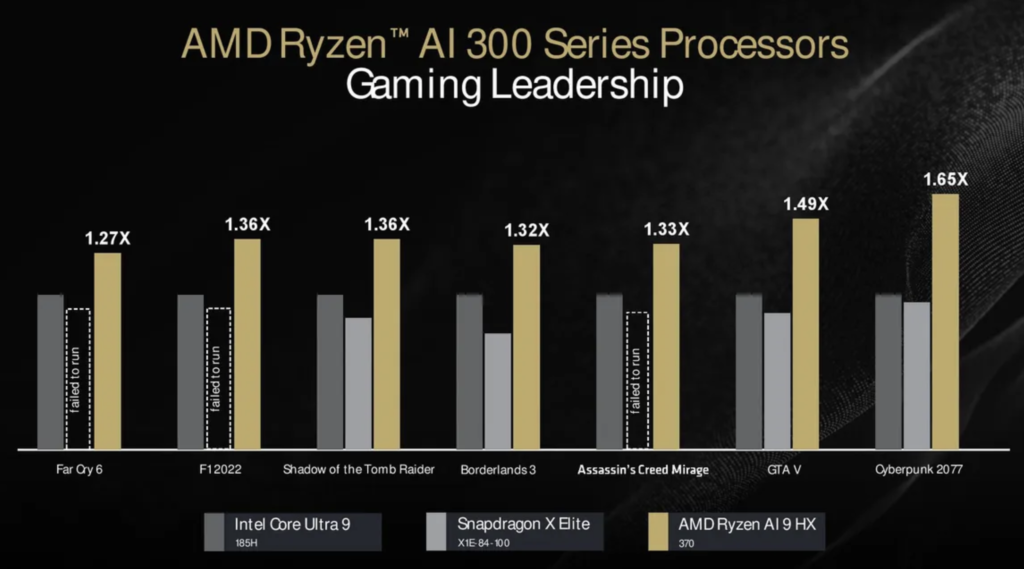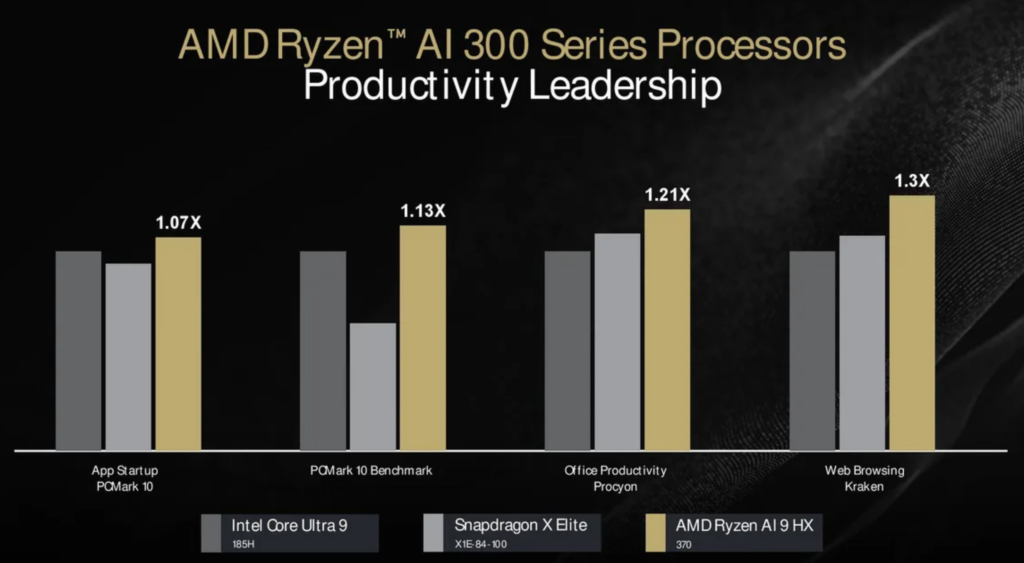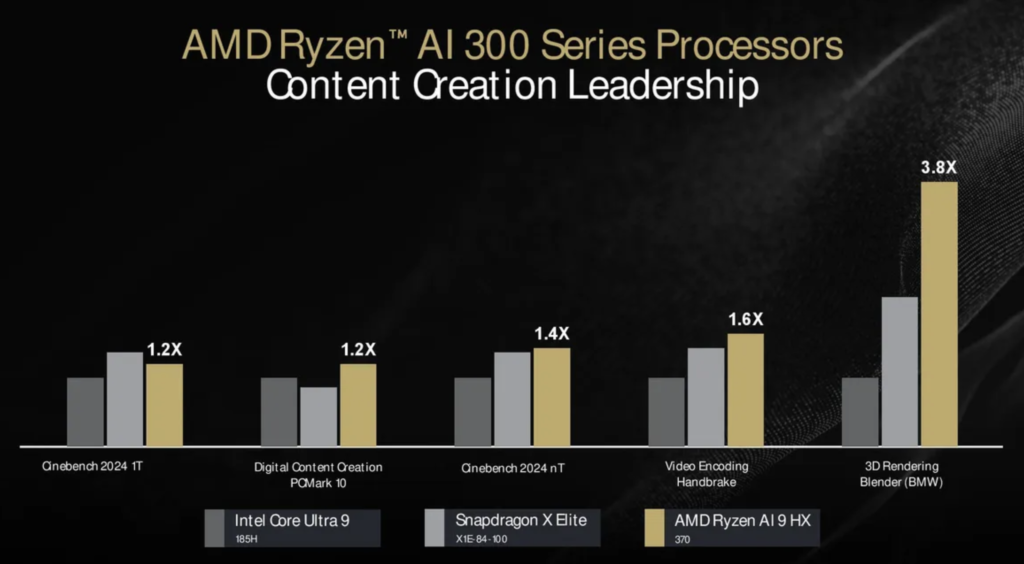AMD’s Strix Point Ryzen AI Chips Aim to Dominate the Market
- AMD announces Strix Point Ryzen AI chips, claiming superiority over Apple, Intel, and Qualcomm.
- Despite bold claims, AMD has yet to provide concrete evidence of its performance.
- The new chips are based on the Zen 5 architecture, promising improved efficiency and gaming performance.
AMD has entered the competitive landscape of laptop processors with bold assertions, introducing its new Strix Point Ryzen AI chips built on the innovative Zen 5 architecture. During a two-day event in Los Angeles, AMD claimed that these chips could outperform Apple’s MacBook processors, as well as Intel’s and Qualcomm’s offerings. However, the company has yet to substantiate these claims with concrete, demonstrable evidence.

Promises and Potential
AMD’s presentation highlighted significant advancements with its Zen 5 architecture, boasting increased instructions per clock cycle (IPC) and enhanced gaming frame rates, all within a power envelope of just 15W. This efficiency is critical for thin and light laptops, which are expected to deliver robust performance without compromising battery life.
The Strix Point Ryzen AI chips are said to excel in various domains:
- Multitasking and Productivity: AMD claims that its new Ryzen chips outperform the MacBook Air in multitasking, image processing, 3D rendering, and gaming.
- Integrated Graphics Performance: The new integrated graphics supposedly surpass Qualcomm’s and Intel’s previous generations, making it capable of running triple-A games in full HD.
- Neural Processing Unit (NPU): AMD’s NPU is touted to perform 50 trillion floating point operations per second, surpassing any of its competitors’ current capabilities.

The Need for Proof
Despite these ambitious claims, AMD’s event left much to be desired in terms of hands-on evidence. Key demonstrations, including gaming and AI performance tests, were not available for direct testing. Several excuses were given, such as demo laptops not representing the final product and issues with the hotel’s Wi-Fi. This lack of tangible proof raises questions about the real-world performance of these new chips.
Architectural Improvements
The Zen 5 architecture promises a substantial leap over AMD’s previous generations. According to AMD, the new CPU cores offer a 16% increase in IPC, translating to faster task execution without needing higher clock speeds. Additionally, the RDNA 3.5 GPU architecture is claimed to deliver between 19% and 32% more graphics performance per watt compared to its predecessors.

However, AMD provided minimal information about battery life improvements. While the chips are said to be more efficient, the company’s vague assertion of “all day” battery life, defined as eight hours or more, does little to inspire confidence. Comparisons with existing models, such as the Qualcomm Vivobook S15’s 18-hour battery life, further highlight the need for AMD to substantiate its efficiency claims.
Comparisons and Competitions
One of the more striking aspects of AMD’s presentation was its direct comparison to Apple’s MacBook and Intel’s processors. AMD asserted that its new chips offer better performance in Cinebench benchmarks and can support up to four displays, unlike the MacBook Air, which supports only two. Moreover, AMD claimed its iGPU could handle demanding games like Cyberpunk 2077 and Red Dead Redemption 2 with impressive frame rates, though specifics were lacking.

Real-World Implications
If AMD’s Strix Point Ryzen AI chips live up to the company’s claims, this could significantly alter the competitive landscape of laptop processors. The first devices featuring these new chips, such as Asus’ Zenbook S16 and ProArt series, are expected to hit the market on July 28. This launch will be a crucial test for AMD to prove its assertions and establish its chips as viable competitors to Apple and Intel.
While AMD’s new chips promise a lot on paper, the true measure of their success will come from independent reviews and real-world usage. As AMD strives to prove that its x86 Zen 5 architecture can compete with the ARM architecture of Apple and Qualcomm, the industry will be watching closely. If the Strix Point Ryzen AI chips deliver on their promises, it could mark a pivotal moment for AMD and the broader landscape of laptop processors. Until then, the jury is still out on whether AMD can truly beat its competitors.
